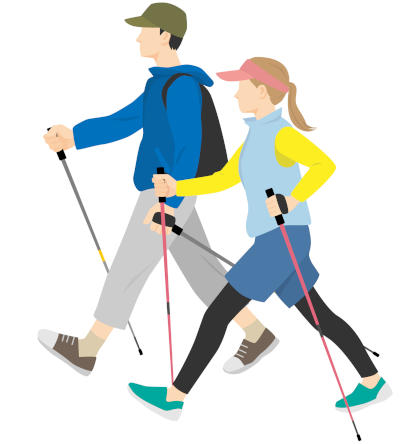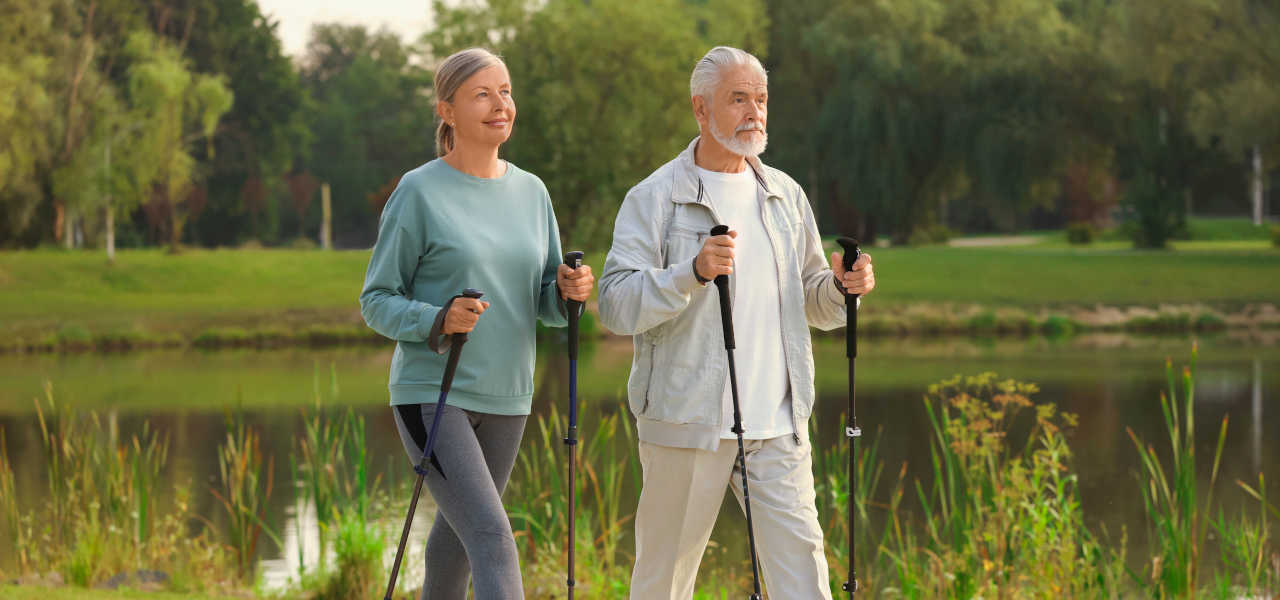Physical activity is vital for all of us throughout our lives, with adults of all ages needing at least 30 minutes of exercise per day for 5 days a week, including older adults.
Your Prescriptions Sorted and Delivered
Regular movement helps maintain strong bones, reduces the risk of falls, and slows the progression of many chronic diseases. In addition, regular exercise can improve mental health. All four basic types of exercise — flexibility, balance, strength, and endurance — are important for keeping mobile.
Walking is known as the simplest and easiest form of moderate-intensity exercise. However, some older adults may face increased difficulty walking due to weakness, poor balance, or decreased coordination. The use of a supportive device such as a cane, trekking stick, or walker may often be useful to help improve our activity levels, so we can “use it” and not “lose it.”
Nordic walking, also known as Nordic pole walking, uses long poles that look like ski sticks with glove-like straps on the handles. It can be particularly useful for older adults who could benefit from external support while walking because of limited physical strength or balance. Potential health benefits and other factors will be described below to help when considering if nordic walking is the exercise for you.
How Did Nordic Walking Start?
Nordic walking was originally introduced in Finland as an off-season training activity for skiers since it is not possible to glide over the ground without snow. Like cross-country skiing, it involves using one pole in each hand to push off the ground and boost forward progress while walking.
Since then, Nordic pole walking has become common and is used by people who want to support or enhance their walking, such as older adults, hikers, and trekkers.
Nordic pole walking is a low-impact exercise that engages the upper body, arms, legs, and core, making it beneficial for the entire body.
How Does Nordic Pole Walking Work?
With each step, you use your arms to lift and place each pole on the ground in turn to move forward. This also engages the core muscles of the body for stability, so Nordic walking requires greater strength than regular walking. Because this activity involves more muscles and increases the heart rate, it can increase cardiovascular fitness and burn more calories.
Benefits of Nordic Pole Walking for Older Adults

The major benefits of Nordic pole walking for older adults are that it offers support for balance while walking, can improve the flexibility of the lower body, and engages the upper body for exercise while walking. Improved endurance from regular use can help reduce the negative effects of many chronic diseases, such as high blood pressure.
Reduces the Risk of Falls
As age-related conditions such as arthritis progress, we may lose our balance more often.
This can lead to difficulty in moving, walking, climbing stairs, and carrying out day-to-day activities. It also increases the risk of falls.
Nordic pole walking uses core strength while moving forward after placing the pole on the ground. This results in strengthening the core muscles, which improves the person’s sense of balance during movement and reduces the risk of falling.
Medbox: Never Sort Medications Again
Helps Manage Weight
Many older adults may become physically less active for many reasons, including illness and injury, which often decreases body strength and calories burned each day. This often then increases weight.
Nordic pole walking requires greater effort than normal walking, which in turn burns extra calories. The added support and safety of the poles may also exert less pressure on some of the joints of the legs and back, although this is a possible concern for the arms and hands in persons with previous injury or arthritis. Older adults can often also cover longer distances more easily by using upper body strength and balance support from Nordic poles compared to regular walking. As a result, Nordic walking may help manage weight and reduce the chances of obesity.
Improves Cardiovascular Fitness
Nordic pole walking requires performing full arm swings with leg movement while lifting and placing the poles on the ground during each step.
This increases the heart rate, improves blood flow to the hands, arms, feet, and legs, and helps lower blood pressure, resulting in improved cardiovascular fitness.
Improves Mental Health
Many older adults may go through loneliness and isolation as their circle of family and friends shrinks over time, which can result in depression, negative thoughts, and low mood.
As with other forms of regular physical activity, increased exertion from Nordic pole walking stimulates the release of feel-good hormones, called endorphins and serotonin. This often helps improve mental health, reducing depression. This is especially true for group activities.
For the price of a pair of ski poles, Nordic walking can be a fun and simple way to enhance regular physical activity for both the body and mind. International World Nordic Walking Day on May 18-19, 2024, could be your day to start!


